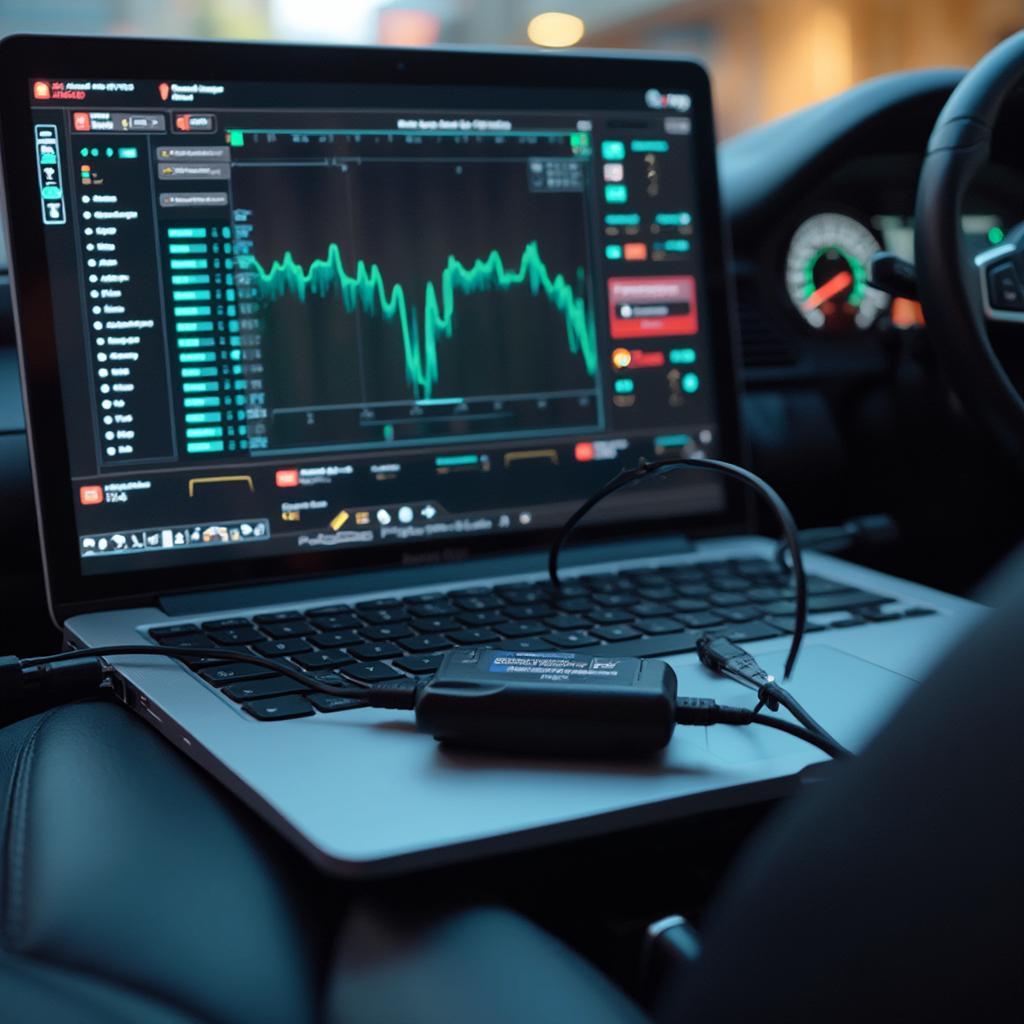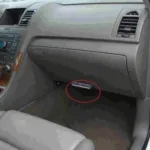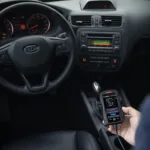The world of car diagnostics has been revolutionized with the advent of On-Board Diagnostics (OBD2) technology. Gone are the days of relying solely on expensive mechanic visits for even the simplest of car troubles. With a “PC to OBD2” setup, you can unlock a wealth of information about your car’s health, right from your computer screen. This guide will walk you through everything you need to know about connecting your PC to your car’s OBD2 port and harnessing the power of DIY diagnostics.
Understanding the Power of PC to OBD2
Connecting your PC to the OBD2 port is like having a direct line of communication with your car’s brain. It allows you to:
- Read and Clear Diagnostic Trouble Codes (DTCs): Easily identify the cause of those pesky check engine lights and other warning indicators.
- View Real-Time Engine Data: Monitor critical parameters like engine speed, temperature, oxygen sensor readings, and more, giving you valuable insights into your engine’s performance.
- Perform Emissions Tests: In some regions, you can even use your PC-based setup for emissions testing, saving you a trip to the testing center.
- Unlock Hidden Features: Some vehicles have hidden features that can be enabled through the OBD2 port using specialized software.
What You Need to Get Started
Getting your PC to talk to your car’s OBD2 port is easier than you might think. Here’s what you need:
- An OBD2 Scanner: This is the hardware bridge between your car and PC. You can choose from various types:
- USB OBD2 Scanners: These are affordable and directly connect to your computer’s USB port.
- Bluetooth OBD2 Scanners: These wireless scanners offer flexibility and are ideal for use with laptops and tablets.
- WiFi OBD2 Scanners: These scanners create a wireless network, allowing you to connect multiple devices simultaneously.
- Diagnostic Software: This software interprets the raw data from your car’s OBD2 port and presents it in a user-friendly format. Numerous options are available, both free and paid, each with unique features and capabilities.
- A Windows PC or Laptop: Most OBD2 software is designed to run on Windows operating systems.
Choosing the Right OBD2 Scanner and Software
Selecting the right combination of scanner and software is crucial for a seamless diagnostic experience. Here’s a breakdown:
For the Casual User:
- Scanner: A basic Bluetooth OBD2 scanner offers a good balance of affordability and convenience.
- Software: Free options like OBD Auto Doctor or Torque Lite provide essential features like reading and clearing codes and viewing basic engine data.
For the Enthusiast:
- Scanner: A high-quality Bluetooth or WiFi scanner with faster data transfer speeds and support for advanced protocols is recommended.
- Software: Paid software like TOAD Pro or ScanXL offer comprehensive features, including live data graphing, advanced sensor analysis, and customization options.
For the Professional:
- Scanner: A professional-grade scanner with bi-directional controls, J2534 pass-thru capabilities, and robust construction is essential.
- Software: OEM-level software specific to the vehicle makes and models you service is crucial for in-depth diagnostics and programming.
Connecting Your PC to OBD2: A Step-by-Step Guide
- Locate Your Car’s OBD2 Port: The OBD2 port is typically located under the dashboard on the driver’s side.
- Plug in the OBD2 Scanner: Insert the scanner firmly into the OBD2 port.
- Turn on Your Car’s Ignition: Turn the key to the “on” position but don’t start the engine.
- Connect to Your PC:
- USB Scanner: Connect the scanner to an available USB port on your computer.
- Bluetooth Scanner: Pair the scanner with your computer using Bluetooth settings.
- WiFi Scanner: Connect your computer to the scanner’s WiFi network.
- Launch Your Diagnostic Software: Select the correct communication port and protocol (usually auto-detected) within the software.
Congratulations! You’ve successfully connected your PC to your car’s OBD2 system. Now you can start reading codes, viewing live data, and exploring the many features your chosen software has to offer.
Unleashing the Power of PC to OBD2 Diagnostics: Practical Applications
Having access to your car’s data through a PC opens up a world of possibilities:
Troubleshooting Engine Problems: When that dreaded check engine light illuminates, your PC-based setup becomes an invaluable tool. Read the DTCs to pinpoint the problem area, then consult online resources or repair manuals for guidance on resolving the issue.
Monitoring Car Performance: Keep a watchful eye on your engine’s vital signs in real time. Identify potential issues before they escalate into major problems, ensuring optimal performance and longevity for your vehicle.
DIY Maintenance: Use your setup to reset service reminders, bleed your brakes, perform DPF regeneration, and more, saving money on trips to the mechanic for routine maintenance tasks.
Beyond Diagnostics: The Future of PC to OBD2
The potential of PC to OBD2 extends far beyond basic diagnostics. As technology evolves, we can expect to see even more exciting applications emerge:
Predictive Maintenance: Imagine your car alerting you to potential issues before they even arise. With advanced data analysis, your PC could predict component failures, allowing you to address them proactively, minimizing downtime and costly repairs.
Performance Tuning: Enthusiasts can leverage OBD2 data to fine-tune their vehicles for optimal performance. From adjusting fuel-air ratios to modifying ignition timing, the possibilities for enhancing your car’s capabilities are vast.
Connected Car Integration: As vehicles become more connected, your PC-based setup could integrate seamlessly with cloud-based platforms, providing remote diagnostics, vehicle tracking, and even automated maintenance scheduling.
Conclusion: Embrace the Power of PC to OBD2
Connecting your PC to your car’s OBD2 port empowers you with the knowledge and tools to take control of your vehicle’s health. Whether you’re a casual driver looking to demystify those cryptic warning lights or a seasoned mechanic seeking advanced diagnostic capabilities, the PC to OBD2 revolution has something to offer everyone. Embrace the technology, unlock the secrets hidden within your car’s computer, and experience the satisfaction of DIY diagnostics.
For any questions or assistance, feel free to contact our 24/7 customer support team via WhatsApp: +1(641)206-8880 or Email: [email protected].


